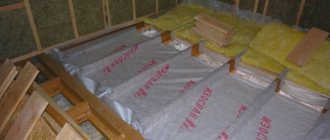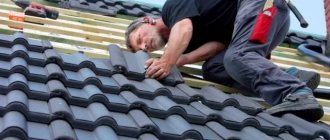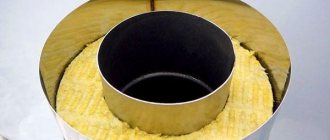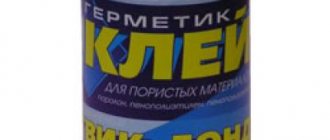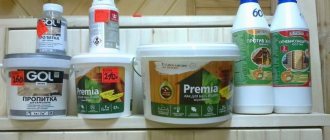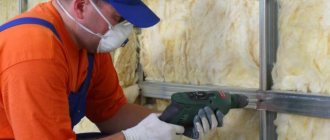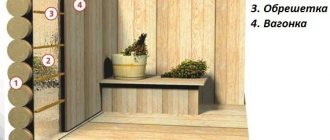Asphalt shingles are a popular option for roofing. The choice of shapes, colors, beautiful appearance and easy installation of soft tiles explain its demand in private construction. This material is durable and looks beautiful. With a creative approach to fastening, it will give the house majesty and completeness.
Having studied the main nuances and installation technology, you can start working on your own.
Vote! Which soft roofing manufacturer did you choose?
What is soft roofing
The basis of the raw material is fiberglass (fiberglass insulation), which is impregnated with bitumen with additives. On top of it there is a layer of stone chips - it protects from environmental influences and provides a large selection of tile colors.
Soft roofing is available in three types:
- Rolled. A striking example is roofing felt, ondulin, uniflex. Flooring occurs in strips. Sealing of joints is achieved by fusing strips or gluing. Roll roofing is suitable for flat (single-pitched) roofs with a slope angle of up to 9 degrees. It is often used to cover the roofs of garages, barns, and outbuildings.
- Liquid mastic. Sold chilled (requires heating) or ready-made. To strengthen it, a metal mesh is first laid on the roof. Then mastic is applied in a monolithic layer. Suitable for flat roofs.
- Roof tiles. The base is bitumen. It consists of small elements - shingles (tiles). In composition and properties it is many times superior to both previous types. In terms of shape and relief, shingles are very similar to ceramic tiles. On each side of the shingles there is a strip of adhesive, the elements of which are glued to the wooden base. Each shingle is glued separately. For reinforcement, roofing screws or other hardware are used. When the new coating is heated in the sun, the edges of the tile melt slightly and a continuous sealed layer is obtained.
Further in the article, the types and technology of installation of bitumen shingles will be discussed.
The standard shingle length is 1 m, width is from 31.7 to 34.9 cm.
Laying soft tiles can be done for complex roofing systems: pitched, hip, domed, conical, hipped, hexagonal.
It is suitable for roofs with a slope angle of 11 degrees or more. The greater the angle of inclination, the longer the coating will last.
Users often search for:
- How to build a frame bathhouse with your own hands
- We are building a bathhouse in the country
Advantages and disadvantages of the material
Advantages of soft tiles:
- Long service life. Depending on the manufacturer, the warranty period can reach 60 years.
- Attractive view. It looks better than the usual gray slate, does not lose its brightness even after years, and perfectly emphasizes the majesty of the building and the entire site.
- Tightness of the coating. Does not allow water to pass through. The elements are securely fastened together, so there is no risk of moisture getting inside the roof.
- To be repaired. If damaged, you can easily replace one or more parts without harming the entire coating.
- Low noise level. Raindrops hitting the roof will fall silently, unlike corrugated sheet flooring.
- Environmental resistance. Shingles are not afraid of temperature changes, frost, precipitation, and do not rot. Damage by insects is excluded.
- Suitable for laying roofing systems of various depths.
- It is simple and convenient to install.
Of the minuses:
- Highly flammable. Not recommended for use on frame wooden buildings.
- Doesn't hold heat well. Therefore, when covering the roof of a private house, high-quality insulation will be required.
Below we will analyze the differences in types of products.
Types of soft tiles
The materials differ from each other in two ways.
By number of layers
Happens:
- single-layer (3 mm thick);
- two-layer (from 5.5 to 6 mm);
- three-layer (9 mm).
For a strong roof covering, it is recommended to use only multi-layer bitumen shingles. The thicker the material, the stronger the surface.
By cutting method
Issued:
- square;
- hexagonal (honeycomb);
- rectangular;
- oval;
- convex;
- diamond-shaped;
- beaver tail;
- brick;
- dragon tooth
There is a much larger selection of colors. In demand:
- red;
- green;
- brown;
- blue.
In addition to single-color products, there are also colored products with a 3D effect or with a smooth transition between colors. The coating can be matte or glossy.
What you need to know before installing a flexible roof
Before you begin installing shingles, it is important to do the following:
- Provide ventilation. Bitumen shingles do not allow moisture to pass through. If this is not done, condensation will begin to accumulate under the material. Ventilation gaps are left at the bottom and top of the roof - air will circulate and excess moisture will evaporate. Exhaust vents are placed at the top, supply vents are placed at the bottom under the slope.
The recommended distance for normal air exchange between the insulation and the roof is 5 cm or more.
- Calculate the dimensions correctly and leave holes in the roof for the chimney, antennas, and drainage. For small openings, rubber seals are sufficient (for cable passage). The riser is laid on plastic passages; tile shingles should already be placed on top.
- Carefully consider the arrangement of the chimney. In addition to reliable waterproofing and insulation, you will need to cover the pipe wall 30 cm with a metal sheet (fire safety requirement). A valley carpet is attached on top with an overlap of metal sheet and tiles by 20 cm. Then shingles are applied, but 8 cm must be left without tiles. Install a metal apron.
- Nails must be driven in at right angles to the surface. The nail should connect the elements and the base, but nothing more.
It is better to buy bitumen shingles, components, and fasteners from one manufacturer. In this case, the products will be maximally adapted to each other.
Nuances you need to know
Diagonal and horizontal laying types
- It is recommended to carry out work on laying rows of soft tiles at an air temperature of +5 degrees (°C). During frosts it is impossible to ensure normal adhesion of bitumen. In addition, the material becomes brittle and does not allow creating a curved structure. The connection of tile shingles to the base and to each other occurs when heated by solar heat.
- Working at low temperatures, the tiles are brought in in small batches, and the bulk is stored in a warm room.
- You cannot leave a soft roof under the scorching sun so that the bitumen does not melt.
- Bituminous shingles have slight differences in color; it is better to take shingles from different packs, then the transition will be smooth.
- Do not clean the roof with shovels, as this may damage the coating. During installation, it is necessary to set the slope angle to prevent snow from accumulating on the roof.
Performance characteristics of flexible roofing
The parameters are:
- Bitumen begins to melt at a temperature of 300 degrees.
- A bitumen carpet in one layer does not exceed a load of 5–8 kg per square meter. m, laminated multilayer - 13 kg per sq. m, so it is not necessary to build a reinforced rafter system, unlike metal tiles.
- Soft tiles are environmentally friendly and safe for health.
- The bituminous surface does not store electrostatics.
- Low electrical conductivity minimizes the risk of lightning strikes.
- Bitumen has a hydrophobic property - it repels moisture.
- Tight fastening to the roof makes the material resistant to any wind loads.
- Flexible roofing is plastic and protects from ultraviolet radiation.
Its important feature is the low amount of waste. Often the figure does not exceed 5% of the total amount of material used.
Methods of fastening sheets of soft tiles
The shingles will be easy to install and cut, but it is important to think through and arrange a continuous sheathing for them.
You can lay a soft roof in the following ways:
- The main one is an adhesive strip on the inside of the tile.
- Additional reinforcement for fastening is the use of roofing mastic and bituminous glue. The latter must be attached strictly according to the instructions, otherwise an excessive amount will only damage the coating.
- Combination with metal hardware. Roofing screws, nails, press washers, screws, staplers, and felt pins are suitable.
In some cases, when bitumen shingles will be laid on top of a steep metal canopy, gazebo or porch at the entrance to the house, it is allowed to use a gas burner and fuse the elements.
Follow the link to read the article: “How to cover a roof with ondulin.”
Installation of curtain rods
Metal strips (cornice and end strips) are installed on the cornices and at the ends of the slopes on top of the lining carpet. When installing the elements, an overlap of 3–5 cm is made, the nails are nailed in a zigzag pattern in increments of 10 cm.
After installing the cornice and end strips, the valley carpet is laid. The roll is rolled out from top to bottom along the entire length of the valley, its middle is located along its axis, the edges are nailed - one per 10 cm.
depositphotos
Types of roofing pie for soft roofing
The roofing cake protects the building from the formation of condensation in the under-roof part and reduces heat loss. The procedure for installing a roof in different regions of the country, depending on its design, can vary significantly.
The structure of the pie for laying a cold roof:
- Rafters.
- Solid and sparse lathing made of wooden boards.
- OSB boards or moisture-resistant plywood.
- Substrate.
- A layer of bitumen shingles.
When arranging the attic floor or residential attic, the roof will have to be insulated.
Assembling the pie step by step will be a little more difficult and will take more time and money. The order is as follows (from outside to inside):
- Elements of bituminous shingles.
- Substrate.
- Moisture-resistant plywood, OSB board (optional).
- Sheathing made of boards.
- Counter-lattice.
- Waterproofing layer.
- Rafters.
- Thermal insulation material (it is better to lay mineral wool).
- Vapor barrier.
- Additional insulating layer (technoNIKOL polystyrene foam boards, penoplex).
- Lathing for covering the roof from the inside.
- Plasterboard, OSB for internal roof lining.
The detailed sequence of work will be discussed in the section below.
Articles that people are interested in:
- Gazebo attached to the bathhouse
- Bathhouse with a large terrace
Step-by-step instructions for installing a soft tile roof
Lathing
It is important to take into account that flexible tiles completely follow the surface topography, so a continuous sheathing of smooth material must be placed under them.
Types of lathing: on the left - solid, on the right - sparse.
Suitable for this:
- sheets of moisture-resistant plywood;
- OSB boards;
- edged or grooved boards.
When fastening the sheathing, it is necessary to leave a gap of up to 5 mm between the panels for thermal expansion of the material. They need to be laid out in a checkerboard pattern.
In detail it looks like this:
- Take boards 10-15 cm wide and 25-30 mm thick. They are placed on top of the rafters. The distance is selected in accordance with the dimensions of the sheet material (plywood, OSB). You need to choose so that two boards fall on the edges of the sheet and one board is in the center.
- The sheets are placed in a checkerboard pattern to increase the strength of the coating. Between the sheets you need to leave a gap of up to 5 mm so that the material has room to expand when heated.
- To ensure natural ventilation under the roof, wooden blocks must be nailed on top of the rafters. Thickness – from 40 mm. They should be laid parallel to the rafters.
When assembling the sheathing, take into account the angle of inclination of the slope - the smaller it is, the smaller the step between the sheathing is.
Cornice strip (dropper)
A drip edge is a metal strip that is usually installed to the eaves overhang. It serves to strengthen and protect the wooden parts of the roof from precipitation. Water will not flow under the roof, but will go straight into the gutter, which is located under the eaves.
It looks like a steel corner up to 3 m long. The width of the shelves is 15–25 cm.
Underlay (underlay carpet)
The resulting sheathing must be covered with a special lining carpet. It is based on bitumen-polymer raw materials.
Carpet functions:
- Leveling the sheathing before laying rows of tiles.
- Strengthening the moisture-repellent properties of the cake.
- Extending the service life of the roof structure.
The carpet is selected to match the technical characteristics of the bitumen shingles. The service life of both materials should be approximately the same.
Installation of the carpet is carried out in the following order:
- Valley flooring. Its middle should coincide with the center of the carpet, and at least 50 cm of coverage should remain on each side.
- Now you need to lay the carpet along the eaves. The material covers the drip shelf at least halfway
- Covering the rest of the roof. Direction - bottom-up. It is recommended to fasten the rows with an overlap of 10 cm in length and in width with an overlap of up to 15 cm. Fasteners - roofing screws, nails. To ensure reliability, the edges of the material must be coated with mastic.
On a gable or hipped roof with various decorative details, the roll of lining carpet should be laid horizontally. You need to start covering from the lower left edge of the slope.
Pediment and roof overhang
A pediment strip is used. Its function is similar to that of a cornice - protection from moisture, only in this case the ends of the sheathing.
The gable planks are overlapped and fastened together with nails. The fastening pitch is 15 cm.
Valley carpet
Endova is a section of the roof that is subject to the heaviest loads during precipitation and snowfall. It needs strengthening and additional insulation from moisture.
The valley carpet is rubber-bitumen raw material, which is stitched with polyester mesh.
An indentation of 3 cm is made along the perimeter from each edge. The carpet is fixed to the valley with nails and reinforced with bitumen mastic. The fastening pitch is 20 cm.
There is no need to cover the bottom of the valley with tiles; the carpet will be visible there.
It is better to choose the color of the carpet the same as the color of the tiles. It is permissible to replace the valley carpet with metal tiles.
Tile flooring
Step by step it looks like this:
- A starting row is built (the edges of the shingles need to be trimmed) or starting strips are purchased (for ridge-eaves tiles).
- Laying is carried out along the cornice from the center and corner of the row (optional). The distance from the overhang should be at least 1.5 m. Roofing nails are used for fastening. The element fixation step is 20 cm.
- In the next row, the shingles are placed, slightly offset towards the already fixed element. Thus, the petals cover the attachment points of the previous parts.
If the slope is inclined less than 45 degrees, each shingle is fixed with 4 nails. At a larger angle of inclination, it is better to fasten with 6 nails.
Installing shingles around the valley
From the middle of the valley, 30 cm in each direction, the tiles are glued to bitumen mastic. The bottom up to 15 cm wide is left without covering material.
It is impossible to fix shingles with nails, since a lot of water always collects on the valley during precipitation.
Arrangement of the ridge
Now you can start laying the ridge. It is important to leave a gap of up to 3 cm between the slopes for free air exchange.
You can fasten a finished metal ridge element on top with self-tapping screws or make a ridge yourself and cover it with a layer of bitumen mastic.
It is also permissible to lay out a solid roof and make holes for ventilation.
Common installation mistakes
| Problem causing leakage or damage | Description |
| Poor fastening of the flooring | If the deck flexes or deforms, the fasteners can bend and damage the tile plates, causing leaks. |
| Ignoring vapor barriers | This leads to moisture getting into the insulation and destruction of the roof structure. |
| Incorrect installation of soft roofing in the first row | If there is a coincidence between the joints of the plates in the starting and first rows, this will inevitably cause a leak in the area of the lower part of the ramp |
| Poor plate fixation | If the plates are loosely fastened, a gust of wind will easily lift and tear off the plate. To avoid this, it is necessary to position the nails correctly: they must be mounted through the fastener strip above the adhesive line covered by the petals |
| Bend of the roofing package | If during installation you do not place the package with plates on a flat surface, it will become deformed and the layers of the roof will separate. Packages must be placed on a flat surface |
| The adhesive strip on the plates runs continuously | In such structures, water does not get out, falling under the plate from the side, from which it moves to the side towards the joints between the roof. Usually these are places near chimneys, valleys or internal drains |
| Poor roof design | If the roof is designed incorrectly, the following problems may appear: incorrect location of valleys or gutters, dormers, chimneys. It is difficult to solve this problem, since it appears during construction. But leaks need to be detected |
| Poor quality chimney waterproofing | Before starting to correct this problem, it is recommended to check the masonry for the presence of fallen bricks. A common mistake that causes leakage: lack of flanging of aprons during laying |
| Low-quality roofing of valleys | Most films offered on the market have a service life of 5-7 years, which is clearly not the same as a roof that can last 50 years. Therefore, according to the installation rules, it is necessary to use a high-quality waterproof film in combination with a metal apron |
By following the technology for laying soft roofs and having the necessary set of tools, the installation of soft tile roofs will be effective, quick and safe. However, if there are doubts about their own qualifications or lack of time, it is better for owners to entrust the work to professionals who are well acquainted with the procedure for laying the roof. And finally, we recommend reading the article about the types of soft roofing.
Famous manufacturers
Below is a list of asphalt shingle manufacturing companies that are in greatest demand.
IKO
Production is located in Belgium, Slovakia, Canada. The main raw material for tiles is soft bitumen.
The molds for casting the material were developed in our own laboratory.
The choice of colors is very large. Product prices are at an average level.
DOCKE
It is a group of companies that have two factories in Russia. Start of activity - 2005. There are official representative offices in every region of the country.
To create soft roof elements, SBS-modified, oxidized bitumen is used.
Low-cost product options have a 20-year warranty, and expensive ones have a 50-year warranty.
TechnoNIKOL (Shinglas)
The association of enterprises produces bitumen shingles under the trademarks TechnoNIKOL Shinglas (Shinglas), Tilercat.
There are both single-layer and multi-layer roofing elements on sale. Several model ranges of tiles are produced. The quality is high.
The warranty period for certain types of tiles reaches 50 years.
Icopal
Large Finnish manufacturing company. The basis of the material is SBS-modified bitumen. Own molds for low tide. Assortment of flowers. Prices are average.
Tegola
Production - Italy. The company started its activities in 1973. Constantly holds a leading position in terms of sales in Europe. There are official representative offices and production in 73 countries, in Russia – in the Ryazan region.
Particular attention is paid to the decoration of shingles. There are shingles with different types of coating, which allows you to decorate buildings in different styles (country, chalet, Provence). The price is affordable.
Kerabit
Finnish manufacturer. Product prices are average market prices. Good quality.
CertainTeed
American manufacturing company. Finished products are also available for sale on the Russian market. The range of tiles in shape and color has no analogues among competitors. Prices are high.
Katepal
Katepal is a large Finnish company producing soft roofing. It goes on sale under the Ruflex brand. Start of work - 1949.
When creating shingles, bitumen with increased frost resistance is used. Multilayer tiles are also produced, but the assortment is several times inferior to the Italian plant.
Results
Let us recall the main points of how to install a soft roof. Laying begins from the first row. In this case, the tiles are placed 1 cm above the eaves overhang. Before laying, the protective layer is removed from the tiles. The sheets are laid adjacent to the previous ones. The tiles are secured with nails in special perforation areas. For greater roof tightness, the edges of the tiles are glued with mastic selected for a specific roofing material. Particular attention is paid to the skate. After all operations have been completed, your roof is ready.
Key quality criteria when choosing flexible tiles
Reduced to the following list:
- Flexibility test. You need to try to bend the element. High-quality shingles will return to their original position without any problems, without loss of appearance.
- No noticeable odor. If it is present, then this indicates the low quality of the raw materials. The material will quickly lose the necessary elasticity.
- The outer coating of stone chips should be applied evenly and not crumble.
- The minimum thickness of shingles in one layer is 4 mm. Products with a lower indicator are not worth taking.
- If the tiles have a self-adhesive surface, it is important to pay attention to the production date. If more than six months have passed, you will have to glue the elements with a hair dryer. These tiles are considered old.
According to the standard, a pack should contain 22 units of material. In terms of finished coating, this is 3 square meters. The weight of a pack of single-layer shingles reaches 8 kg, multilayer - 20 kg.
To ensure a high-quality and durable roof, it is important to take a responsible approach to the preparation of the base, ensure the tightness of the coating and not skimp on fasteners.
Production technology
Flexible tiles (also known as soft roofing, or shingles in America) are a material made from fiberglass and bitumen. Its outer surface is covered with fine crushed stone, the so-called basalt granulate. Moreover, each layer of material performs its own functions, which together form the water resistance, strength, and durability of the entire coating as a whole.
Fiberglass layer
The strength of the roofing sheet is ensured by the base - several layers of fiberglass woven from durable glass fibers. In addition to strength, fiberglass has other important characteristics. This is an inorganic material that is not subject to corrosion, rotting, and does not form mold.
Installation of tiles.
Bitumen coating
The water resistance of the coating is ensured by bitumen obtained from petroleum and modifiers. Before being applied to fiberglass, bitumen undergoes a special treatment, which increases its resistance to heat. The resulting bitumen sheet can be used at high temperatures, up to +110°C.
Bitumen is applied in several layers from below and above the base canvas. An additional adhesive base is applied from below, which is covered with a film. The method of laying flexible tiles on a rough base is gluing. Before gluing, the film is removed and pressed with the adhesive surface to the rough roof.
Stone chips
To protect against mechanical damage, bitumen is sprinkled with stone chips on top - basalt or shale granulate. In addition to protective properties, small stones of basalt or slate provide decorative properties, surface roughness and fire resistance of the roof. The rough top of the roof makes it difficult for water to roll off and snow to slide down. This prevents snowdrifts from sliding down from the roof.
Frame roof slope.
High quality tiles
The full range of operational and technological properties depends on the production of the roofing covering. High-quality material - strong, flexible, decorative, durable. How to determine quality tiles:
- It is flexible - it bends easily and without destruction.
- Does not create a strong odor. If the new roof has a strong odor, this indicates strong evaporation of its components, which can cause loss of elastic properties.
- The granulate does not crumble and adheres firmly to the surface.
In addition, you need to look at the date of manufacture of the roof. The new material adheres well. If more than a year has passed since production, then laying flexible tiles will require the use of a construction hair dryer, since the adhesive properties of the lower layer will be partially lost.


